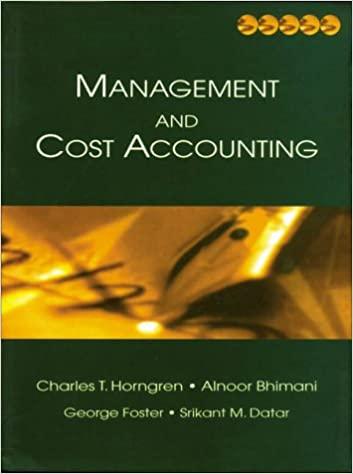Target cost, activity-based costing systems (continuation of 12-15). (50-60 minutes) Assume all the information in Problem 12-15.
Question:
Target cost, activity-based costing systems (continuation of 12-15).
(50-60 minutes) Assume all the information in Problem 12-15. Proust has just received some bad news. A foreign competitor has introduced products very similar to P-41 and P-63. Given their announced selling prices, Proust estimates the P-41 clone to have a manufacturing cost of approximately EUR 680 and the P-63 clone to have a manufacturing cost of approximately EUR 390. He calls a meeting of product designers and manufacturing personnel at the printer division. They all agree to have the EUR 680 and EUR 390 figures become target costs for redesigned versions of Cl’s P-41 and P-63, respectively. Product designers examine alternative ways of designing printers with comparable performance but lower cost. They come up with the following revised designs for P-41 and P-63 (termed P-41 REV and P-63 REV, respectively): mkiu56

REQUIRED 1. What is a target cost per unit?
2. Using the activity-based costing system outlined in Problem 12-15, calculate the manufacturing costs of P-41 REV and P-63 REV. How do they compare with the EUR 680 and EUR 390 target costs per unit?
3. Explain the differences between P-41 and P-41 REV and between P-63 and P-63 REV.
4. Assume now that Marcel Proust has achieved major cost reductions in one of the activity areas. As a consequence, the allocation rate in the assemblymanagement activity area will be reduced from EUR 40 to EUR 28 per assembly-hour. How will this activity-area cost reduction affect the manufacturing costs of P-41 REV and P-63 REV? Comment on the results.
Step by Step Answer:

Management And Cost Accounting
ISBN: 9780130805478
1st Edition
Authors: Charles T. Horngren, Alnoor Bhimani, Srikant M. Datar, George Foster





